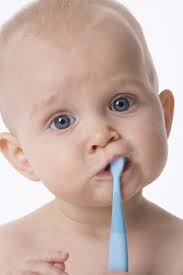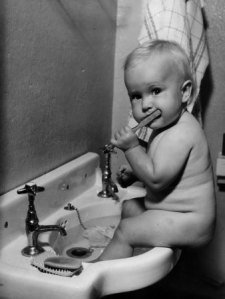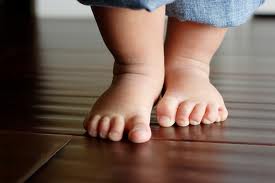So, it’s been awhile, and in this time I’ve started to weigh the pros and cons of continuing this blog. However, no matter how many cons there are (no one reads it; it takes time), the pro will always win: this is my own “scrapbook” of sorts to my son, written in a personal and informational way. So onward we go …even if unpublished!
Upcoming posts might help to celebrate my son’s first birthday with discussion of:
(1) First hair cut. YAAAH!
(2) Norovirus. BOOOOO!
But rather than dwell into the roller coaster ride of the past few months (still generally quite good), let’s explore the world of what a one-year-old should be drinking.

No matter what site you read, there seems to be general agreement not to start cow’s milk with a baby until he is one year old. Of course, I highly doubt this rule was followed when I was a baby and I am 6’3″ with multiple advanced degrees, so let’s remember our sanity, folks. Still, it’s nice to all agree on something after the brutal, violent chronicles of formula v. breastmilk (and, yes, I understand 12 months is a START not necessarily a PUSH. Keep on keepin’ on, crazy people who judge others.)
So, that being said, we started our son on organic whole milk around his first birthday and then read:
“Babies can’t digest cow’s milk as completely or easily as breast milk or formula. Cow’s milk contains high concentrations of protein and minerals, which can tax your baby’s immature kidneys. In addition, cow’s milk doesn’t have the right amounts of iron, vitamin C, and other nutrients for infants. It may even cause iron-deficiency anemia in some babies, since cow’s milk protein can irritate the lining of the digestive system, leading to blood in the stools. Finally, cow’s milk doesn’t provide the healthiest types of fat for growing babies.” (BabyCenter)
Whew, glad he wasn’t drinking milk at 11 1/2 months old. That sounds like it would be brutal! I’m so glad science found the exact date it’s OK! (Yes, some sarcasm here.)
We treated it like a science experiment, with my brief chemistry days making a return — is the meniscus at 4 oz? 3 oz? . As he had been receiving five bottles a day of 5.5- 6 oz of formula, our goal was to whittle him down to five bottles a day of 4 oz of milk. And because we’re people who bought a house, got married, and moved across the country in a single month, why not also transition him from bottles to sippy cups at the same time?
Recipe for disaster? Actually, no. So far it’s been going quite well.
Milk Chronicles
We started our son on about 1 oz organic whole milk / 5 oz formula the week before his birthday. Yes, I know … the quote above considers this akin to poisoning and abuse.
We started exclusively in bottles and, within a week, he moved to 2 oz organic whole milk / 3 oz of formula (yes, for an overall decrease of 1 oz). At daycare, they often give the infants his age sippie cups, so there was some experience there.
Then, when we went to his 1-year appointment, the doctor said we could switch him to 2% organic instead of whole milk. The reason is that he was in that 75-85% for weight that puts him at risk of obesity. I checked with our in-family doctor and she agreed to this as well.
What type of milk?
Based on some anecdotal information (can’t find a study!), this seems to be fine. Despite web sites decrying 2% before age 2, it seems to not be an issue.
This choice quote gave me some comfort:
“If your toddler has an overall balanced diet, then switching to two percent milk is fine. As your pediatrician mentioned, low-fat and whole milk have equal amounts of vitamins and minerals. In fact, an 8-ounce glass of low-fat milk contains more protein than an 8-ounce glass of whole milk (10 grams versus 8 grams). Whole milk contains 3.5 to 4 percent fat, and this extra fat is primarily saturated fat, which your toddler can do without. But your growing toddler still needs fat in his diet. That is why I do not advise giving skim milk to infants”(Parenting.com)
So, here we are, two weeks after his first birthday, and he’s exclusively on 2% milk. That was surprisingly easy. He does seem to be a bit hungrier now at times (likely due to a reduction in overall liquid from 30 oz of formula to 20 oz of milk a day), so we try to supplement with as much water as possible.
We are also focusing on organic milk, though “There’s no conclusive evidence that these kinds of milk are better for children, but there’s no harm in them.” (BabyCenter)
How much milk?
We now might want to reduce down a bit more. As stated by the American Academy of Pediatrics (AAP):
“Most kids will get enough calcium and vitamin D if they drink 16 to 20 ounces (2 to 2 1/2 cups) of cow’s milk a day. Offer 1-year-olds whole milk (unless they’re at high risk for obesity). Don’t offer more than 3 cups of milk a day or your child may not have room for the other foods she needs to round out her diet. If your toddler’s still thirsty, offer water.” (BabyCenter)
Another opinion, making us worried about iron deficiency (which is a thing in our families):
“To help prevent iron deficiency:
- Limit your child’s milk intake to 16-24 full ounces (480-720 milliliters) a day.
- Increase iron-rich foods in your child’s diet, like meat, poultry, fish, beans, and iron-fortified foods.
- Continue serving iron-fortified cereal until your child is 18 to 24 months old.” (KidsHealth)
A British site says “Nutritionists recommend that one-year-olds drink no more than 350ml of milk a day” (BabyCentre), but this is America and we refuse to learn the metric system, so not like any of us across the pond here can read that into ounces. (That being said, the suggestion translates to 12 oz.)
Right now, he’s getting 20 oz of 2% cow’s milk a day, in 5 bottles/cups (see below). This is the max of suggestion 1, but within the range of suggestion 2. We should reduce, but he generally eats his food, so it’s not like it’s filling him up.
Still, we are very mindful of obesity concerns even though he looks healthy and not obese (well, at least not in the cheeks area!)
Sippie Cup Chronicles
So, how about the transition from bottles to sippie cups?
Let’s just sum up all of the advice across the Internet with this quote:
“Between 12 and 18 months of age is a good time for transition to a cup. Instead of cutting out bottles all at once, you can gradually eliminate them from the feeding schedule, starting with mealtime. Offer whole milk in a cup after the child has begun the meal. If you are breastfeeding, only offer milk in a cup and avoid the bottle habit altogether.” (KidsHealth)
We have certainly done that and, with our son’s five “substantive” drinks a day (water not included), the three at school are now in sippie cups, one at home is in a sippie cup (dinner) and two at home are in bottles (not due to our preference but because he has bottle #1 while we’re getting dressed at 6am and bottle #2 at the end of the day when he’s tired and sometimes passes out.)
All in all, our 12-month-old is completely off formula and heading off of sippie cups, so we’re way ahead of the game. We just need to be mindful of his weight, stick to 2%, and possibly reduce the number of ounces he gets a day and/or serving. Let’s hope that, at the 18-month check-up his weight and height are more in balance! (81% weight, 57% height or so right now).
Update: At 13 months, he is still drinking his first and last milk of the day via a bottle, but exclusively drinks out of sippie cups the other times. We also switched his “snack” drink to water and reduced his dinner drink a bit, so that should have helped with the amount!















